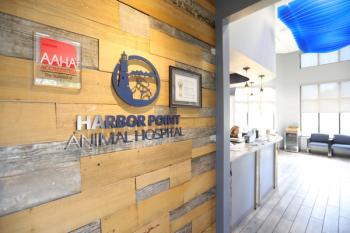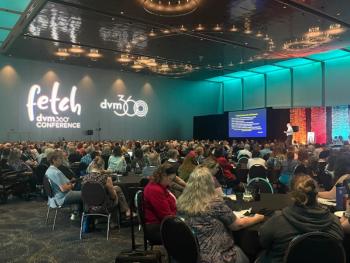
AVMA, AAHA to release vaccine positions
Lead veterinary organizations take stance on disease protection
Lakewood, Colo.-In response to public and professional demand, two of the nation's top veterinary associations prepare to address the contentious topic of vaccine use with unprecedented resolve.
But as the American Animal Hospital Association (AAHA) prepares caninevaccination guidelines, which carry some political risk, critics questionwhy the American Veterinary Medical Association (AVMA), the profession'slargest representative, is content to release just a position statementon the issue, seeming to ignore the need for real recommendations.
DVM Newsmagazine has learned the release of AAHA guidelines are expectednext spring. AVMA's position statement was being submitted to the Journalof the American Veterinary Medical Association for publication at presstime.
"I think AVMA should take a more profound stance; the professionexpects it," says Dr. Richard Ford, a North Carolina State Universityprofessor working on both projects. Ford champions changing vaccinationpractices. "The position statement is good, but it's not guidelines.I'd like to know what the AVMA has to say, but since when do you rememberthem doing anything controversial?"
Serving a need
While the position statement isn't a "cookbook," it's far fromsub par, says Dr. Elizabeth Curry Galvin, AVMA assistant director of scientificactivities.
The statement stresses AVMA's stance on education, a reduction in theprofession's dependence on vaccine sales, which account for a significantportion of practice income, and encourages practitioners to use their ownclinical judgment.
"This is a huge issue," Galvin says. "Vaccines have beenincredibly successful in curbing disease, and the optimal revaccinationdurations are not known, this is true. But there just isn't enough informationout there for us to develop guidelines.
"What we're saying is veterinarians have to continually educatethemselves with what's out there, and do their own research into the annualvaccine environment."
Lack of guidance
But even research-savvy veterinarians hunger for more direction. Asidefrom following immunologists like Dr. Ron Schultz, a University of Wisconsinprofessor who's performed duration of immunity studies since the 1970s,or epidemiologist Dr. Larry Glickman, a vaccine critic at Purdue Universitywho's studying post-inoculation antibody development, DVMs have little elsewhereto turn.
AAHA panel members are tight-lipped about contents of the group's forthcomingguidelines, but the American Association of Feline Practitioner's (AAFP)1998 version for cats lends to speculation. While the 29-page document doesn'toffer a cut-and-dry approach, it recommends increasing one-year revaccinationintervals to three years, speculating that most vaccines last for at leastthat length of time. In conjunction, some manufacturers have increasedtheir rabies inoculation protocols to three years as well.
Co-author Dr. Tomas Elston says writing the guidelines "opened upa can of worms."
"The subject is just so controversial," says Elston, a felinepractitioner in Irvine, Calif. "The research that's out there has certainlychanged the way we look at vaccines, but there's just not enough information.Vaccinating is a medical decision, and unfortunately with more knowledge,we have more questions.
"You don't just grab a vile from the refrigerator, read the manufacturer'slabel and use it. It's not that black and white."
Lack of research, support
Speculation feeds the gray area of vaccines. Practitioners and scientistslike Glickman theorize the repeated use of vaccines breed antibodies thatcan attack a host's own organs, causing autoimmune disease. Schultz arguesthat many annual vaccines remain effective throughout a lifetime; at leastone of his reports successfully challenges a distemper vaccine after sevenyears. But despite all the research, it wasn't until veterinarians startednoting soft-tissue sarcoma developing at vaccine injection sites in catsthat the issue sparked widespread debate.
That's when the Vaccine-Associated Feline Sarcoma Task Force began itsongoing quest to prove the vaccine-sarcoma connection. AVMA admits thatthe practice of annual vaccinations is based on historic precedent and notresearch. But that research is expensive, requiring large numbers of animalsto be isolated and studied for long periods of time, says Schultz.
"That's why a lot more work doesn't come out," he says. "Inthe 1970s, there were four vaccines for dogs and we weren't using them often.Now there are 16 vaccines for dogs, and if they're not getting them annually,they're getting them more often than that.
"I'm the only one in the profession who challenges the immunityof vaccines. I'm really one among a total of three individuals who havechallenge studies out. With just a few of us studying them and more vaccineson the market, how are we supposed to keep up?"
Framing concerns
As AVMA continues to "circle the issue," according to critics, AAHA's board members say the guidelines, still in draft form, aren't strict.Ford says they are just what the profession needs.
"We're not dictating what you should vaccinate with, but a lot ofveterinarians want to know the protocols," Ford says. "The healthimplications of vaccines are difficult to know because there aren't enoughstudies to determine a cause and effect relationship between vaccines andinduced injury.
"Still, most authorities agree there's a likely correlation anda lot of interest in the issue. "
On the horizon
AVMA refuses to reveal much concerning its position prior to publication,but according to Galvin, the statement offers advice for veterinarians andproposes the following:
* Create and promote a national adverse reporting system, documentingreactions to vaccines.
* Manufacturers should improve vaccine labeling, clearly printingall that's known about a product.
* Three-year rabies vaccines should be promoted rather than traditionalannual boosters.
* Veterinarians must promote the value of the exam and move awayfrom their dependence on vaccine income. Emphasize communication, customizationand learning the lifestyle of clients to attract patients to the practice.
"We're rolling together what we do know about vaccines, find inpublished research and expert guidance," Galvin says. "I thinkthis will continue to unfold over the years as we improve on our information.All of our ideas need to come together to make the profession move forward."
Newsletter
From exam room tips to practice management insights, get trusted veterinary news delivered straight to your inbox—subscribe to dvm360.




